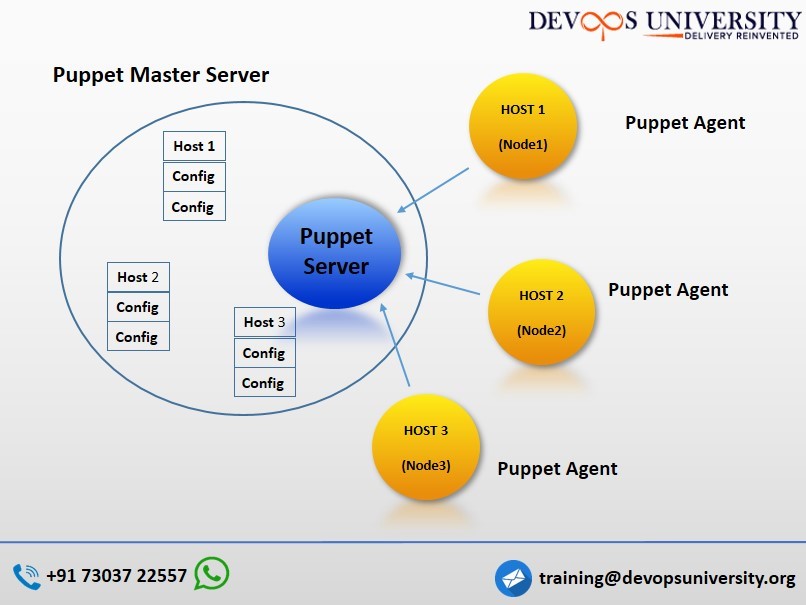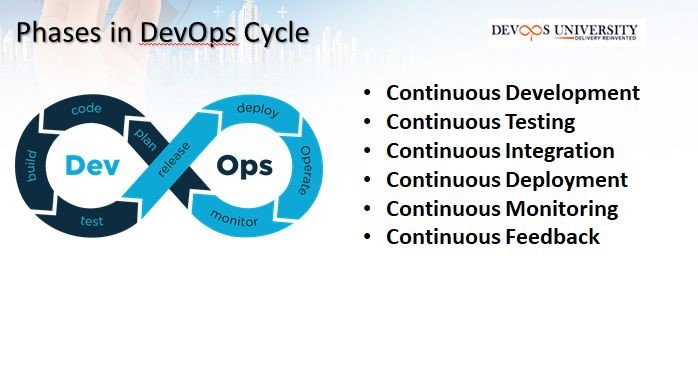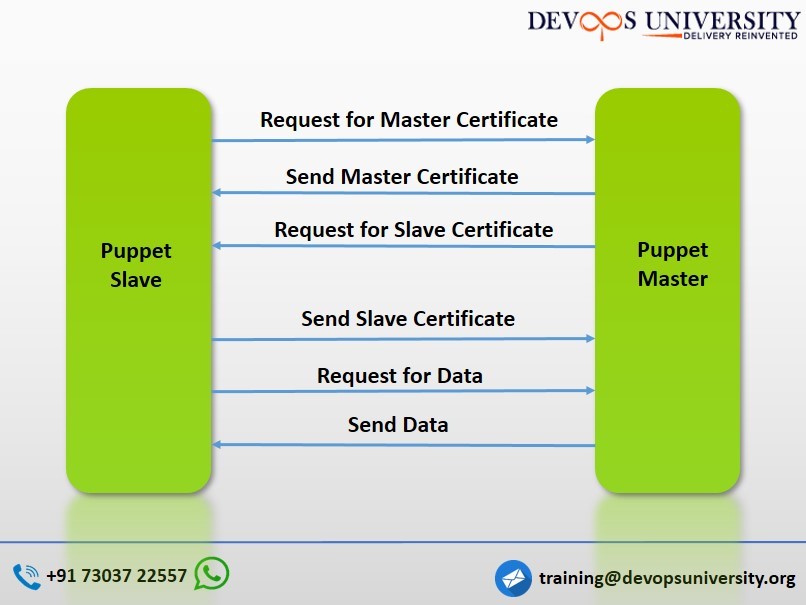
Puppet is a free and open-source tool for managing and deploying software configurations. It’s most commonly used on Linux and Windows to pull the strings on multiple application servers simultaneously. On the other hand, Puppet may be used on a variety of platforms, including IBM mainframes, Cisco switches, and Mac OS servers.
Puppet is a system administration solution that aids in the automation and centralization of configuration management. It’s also used to deliver software. It aids in the management of server configurations, deployments, and orchestrations of numerous applications throughout the organization’s infrastructure.
Puppet is the most mature Configuration Management tool available today.
Puppet is a unique configuration management tool that may be used to deploy, configure, and manage different servers. It has the following capabilities:
- Defining different configurations for every host and checking and confirming that the required configuration is in place and has not been changed (Puppet will revert to the configuration needed if it has been changed) on the host.
- Machine scaling up and down in real-time.
- Controlling all of your configured machines to automatically disseminate a centralized (master-server or repo-based) modification to all.
DevOps is a set of approaches that leverage continuous integration, the interaction of multiple specialists, and automation tools to improve the efficiency of development processes and software deployment in IT operations. System administration is commonly related to DevOps, which combines these sectors. In addition, administrators frequently transition from IT to DevOps since they have similar backgrounds.
When you use Puppet, you define the desired state of your infrastructure’s systems you wish to control.
This is accomplished by creating infrastructure code in Puppet’s Domain-Specific Language (DSL) – Puppet Code — which can be used with various devices and operating systems. The declarative nature of Puppet programming means that you specify the desired state of your systems rather than the processes required to get there. Puppet then automates obtaining and keeping these systems in that state. Puppet accomplishes this with the help of a Puppet agent and a Puppet primary server. The Puppet primary server is where the code that describes your desired state is stored. The Puppet agent converts your code into commands, which it then runs.
If you have 100 servers, maintaining, managing, and configuring them manually is impossible. Therefore, the following are Puppet’s actions:
- Puppet enables us to create unique configurations for each host.
- It continuously monitors the server for configuration changes, and if any are made, it instantly switches the hosts to a predefined configuration.
- It has complete control over a large amount of infrastructure, allowing it to affect centralized configurations.
- It controls a large amount of infrastructure, allowing the centralized configurations to be implemented across the board.
- It’s also utilized as an automatic deployment mechanism for all servers’ applications.
- Infrastructure as a code is executed, with regulations and configurations determined in the code.
Why Use Puppet Software for DevOps
- Manual infrastructure configurations are not long, time consuming, complex, or demanding.
- Automates the process of configuring, controlling, and administering large numbers of servers and other infrastructure (over 100 servers).
- Automating infrastructure deployment and configuration eliminates complex, error-prone operations.
- It is a low-cost approach to resolving configuration constraints and speed latency.
- Puppet automates the operations and deployment procedure throughout the software release cycle, making it a continuous delivery approach.
What Are The Benefits Of Puppets In DevOps?
Puppet saves time by speeding up deployment.Unlike other programmes, it keeps track of configuration changes at regular intervals, which improves security. Furthermore, it manages host configurations using an easy-to-learn language called DSL (or Domain Specific Language), following configuration distribution in any system.
- It allows DevOps administrators to establish custom setups for each server and numerous layouts and configuration schemes.
- Puppet is a low-cost solution for resolving configuration bottlenecks and delays.
- It integrates with various tools and infrastructures without difficulty.
- Make a change control method that is both obvious and auditable.
- Easily add new features and capabilities to current systems.
- Upgrade all software programmes in the company.
- Obtain a solid understanding of the infrastructure and computing resources.
- Automated testing of intended modifications in replica systems. Puppet has strong automation capabilities, so most DevOps experts use it.
Puppet Architecture
- The puppet slave represents the data that the puppet slave sends to the Puppet Master. These facts are usually strong/value data pairs that reveal information about the slave’s uptime, operating system, IP address, and other characteristics.
- The Puppetmaster creates a catalogue, which works as a guide for how the slave should be set based on the information supplied by the Puppet slave. To put it another way, a catalogue is a document that contains the desired state for each resource that the Puppet Master manages on a slave.
- Puppet slave informs Puppet dashboard that the configuration is complete according to the catalogue.
- If a user or group owns a file that Puppet manages, the file resource will automatically require that user or group. The ability to design one’s resource types is a unique feature of Puppet software.
Scalability and consistency, portability, adaptability, and continuous infrastructure analysis are all essential aspects for DevOps to consider. Many of these issues are resolved when Puppet is used. Many additional necessary DevOps tools are available, and the list is constantly expanding. The newer tools vary in that they are less well-known, whereas Puppet has a good reputation, has made tremendous progress, and is used by many large IT businesses.
Conclusion
There are various tools available in configuration management like Puppet, Ansible, Saltstack, Chef etc. Puppet is a configuration management tool that allows you to centralize and automate the process. Puppets can also be used to deploy software. It is an open-source configuration management software commonly used to configure, manage, deploy, and orchestrate numerous applications and services across an organization’s infrastructure. A puppet is a fantastic tool for inspecting, delivering, and running software, regardless of where it runs. It is possible to ensure consistency and security across the entire infrastructure. Puppet’s virtue may be upgraded as needed, and the systems will still be compliant with the new upgrades.




 Workshop on Certified DevOps Foundation
Workshop on Certified DevOps Foundation Workshop on Certified DevOps Professional
Workshop on Certified DevOps Professional Get DevOps Certified
Get DevOps Certified